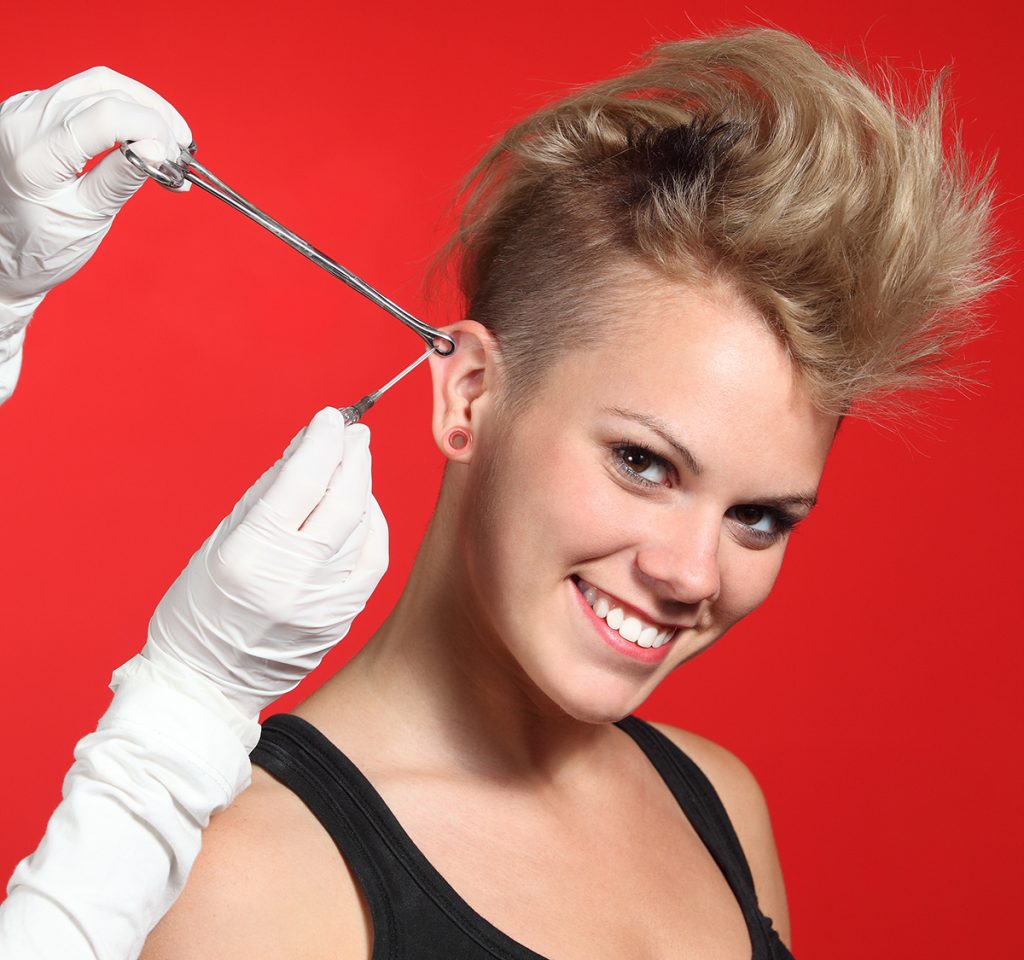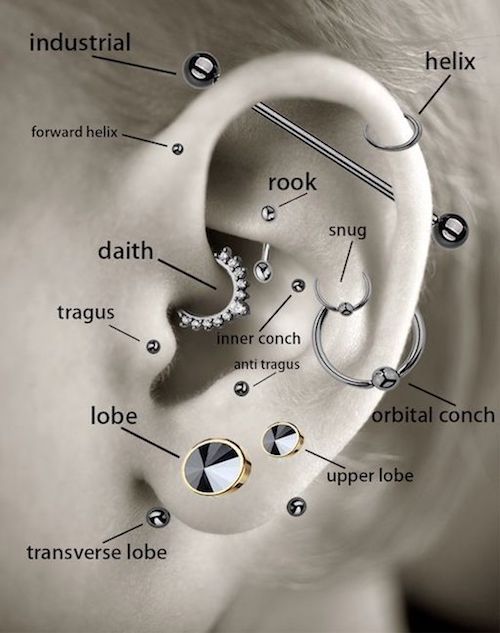Getting a helix piercing can be an exciting and stylish addition to your look, but many people wonder when the pain will subside and how to care for their new piercing properly. While the initial discomfort is common, understanding the healing process and taking the right steps can significantly reduce discomfort and speed up recovery. If you're considering a helix piercing or have recently gotten one, this article will provide all the information you need to ensure a smooth healing experience.
Helix piercings, located on the upper cartilage of the ear, are known for their aesthetic appeal but also for being slightly more painful than other types of ear piercings. The healing time and pain level can vary depending on several factors, including aftercare, individual healing rates, and the type of jewelry used. In this guide, we'll explore everything you need to know about the healing process, pain management, and how to care for your new piercing.
By the end of this article, you'll have a clear understanding of when your helix piercing will stop hurting, how to care for it, and what to expect during the healing journey. Let's dive in!
Read also:Mitchell Hess Net Worth The Complete Guide To His Wealth And Career
Table of Contents
- Introduction to Helix Piercing
- When Does the Pain Stop?
- The Healing Process
- Factors Affecting Healing
- Pain Management
- Aftercare Tips
- Common Mistakes to Avoid
- Signs of Infection
- Types of Jewelry for Helix Piercings
- Conclusion
Introduction to Helix Piercing
Helix piercings have become increasingly popular due to their unique placement and stylish appearance. Located on the upper cartilage of the ear, this type of piercing can add an edgy or elegant touch to your look, depending on the jewelry you choose. However, because it involves piercing through cartilage rather than soft tissue, it can be more painful and take longer to heal compared to other ear piercings.
Why Choose a Helix Piercing?
Many people opt for a helix piercing because of its versatility and aesthetic appeal. Whether you're looking for a subtle stud or a bold hoop, the helix piercing offers endless possibilities for self-expression. Additionally, its placement allows it to complement other ear piercings, creating a cohesive and stylish look.
When Does the Pain Stop?
One of the most common questions people ask after getting a helix piercing is, "When does it stop hurting?" While the level of pain varies from person to person, most individuals experience the most discomfort during the first few days after the piercing. The initial pain is often described as a sharp, stinging sensation, but it usually subsides within a week or two.
Factors Influencing Pain Duration
- Pain tolerance: Everyone has a different pain threshold, so your experience may differ from others.
- Aftercare: Proper aftercare can significantly reduce discomfort and speed up the healing process.
- Location: Depending on the exact placement of the piercing, the pain level may vary.
The Healing Process
The healing process for a helix piercing typically takes between 6 to 12 months. During this time, it's essential to follow proper aftercare instructions to ensure a smooth recovery. While the initial pain may subside within a few weeks, the piercing will still be in the healing phase for several months.
Stages of Healing
- Initial phase (1-4 weeks): The piercing may be tender and swollen during this period. Avoid touching or rotating the jewelry to prevent irritation.
- Intermediate phase (1-3 months): The swelling and redness should start to decrease, but the piercing is still fragile. Continue with regular cleaning and avoid exposing it to harsh chemicals.
- Final phase (3-12 months): The piercing should be fully healed by this point. However, it's still important to monitor it for any signs of infection or irritation.
Factors Affecting Healing
Several factors can influence how quickly your helix piercing heals. Understanding these factors can help you take proactive steps to ensure a smooth recovery.
Key Factors
- Aftercare: Consistent and proper aftercare is crucial for preventing infections and reducing healing time.
- Individual health: Factors such as diet, hydration, and overall health can impact how quickly your body heals.
- Environmental exposure: Avoid exposing your piercing to harsh chemicals, sweat, or dirty environments, as these can delay healing.
Pain Management
While some discomfort is normal after getting a helix piercing, there are steps you can take to manage the pain and reduce irritation.
Read also:What High School Did Addison Rae Go To Unveiling The Educational Journey Of A Tiktok Sensation
Tips for Managing Pain
- Apply a cold compress: This can help reduce swelling and numb the area.
- Avoid touching the piercing: Constantly touching or rotating the jewelry can irritate the area and prolong healing.
- Use over-the-counter pain relievers: If necessary, you can take mild pain relievers like ibuprofen to manage discomfort.
Aftercare Tips
Proper aftercare is essential for ensuring your helix piercing heals correctly and without complications. Here are some tips to keep in mind:
Steps for Effective Aftercare
- Clean the piercing daily: Use a saline solution or mild soap to clean the area gently.
- Avoid harsh products: Stay away from alcohol-based cleaners, as they can dry out the skin and irritate the piercing.
- Protect the piercing during sleep: Sleep on a clean pillowcase and avoid putting pressure on the piercing.
Common Mistakes to Avoid
There are several common mistakes people make when caring for a new helix piercing. Avoiding these errors can help prevent complications and ensure a smooth healing process.
Mistakes to Watch Out For
- Changing the jewelry too soon: Wait until the piercing is fully healed before changing the jewelry.
- Exposing the piercing to water: Avoid swimming or soaking in a bathtub for at least the first few weeks.
- Touching the piercing with dirty hands: This can introduce bacteria and lead to infections.
Signs of Infection
It's important to monitor your helix piercing for any signs of infection. Early detection and treatment can prevent more serious complications.
Common Symptoms of Infection
- Increased redness and swelling: If the area becomes more swollen or red over time, it could be a sign of infection.
- Pus or unusual discharge: Yellow or green discharge is a red flag and should be addressed immediately.
- Fever or warmth around the piercing: If the area feels warm to the touch or you develop a fever, seek medical attention.
Types of Jewelry for Helix Piercings
Choosing the right type of jewelry for your helix piercing is important for comfort and aesthetics. Here are some popular options:
Popular Jewelry Choices
- Studs: A classic and versatile option for helix piercings.
- Hoops: Perfect for creating a bold or edgy look.
- Captive bead rings: A stylish and secure choice for those who want a more intricate design.
Conclusion
In summary, the pain from a helix piercing typically subsides within a few weeks, but the healing process can take up to 12 months. Proper aftercare, pain management, and avoiding common mistakes are key to ensuring a smooth recovery. By following the tips outlined in this guide, you can minimize discomfort and enjoy your new piercing for years to come.
We encourage you to share your experience with helix piercings in the comments below or explore other articles on our site for more information on body piercings and aftercare. Remember, taking care of your piercing is an investment in your health and appearance, so don't hesitate to reach out if you have any questions or concerns!
Sources:

